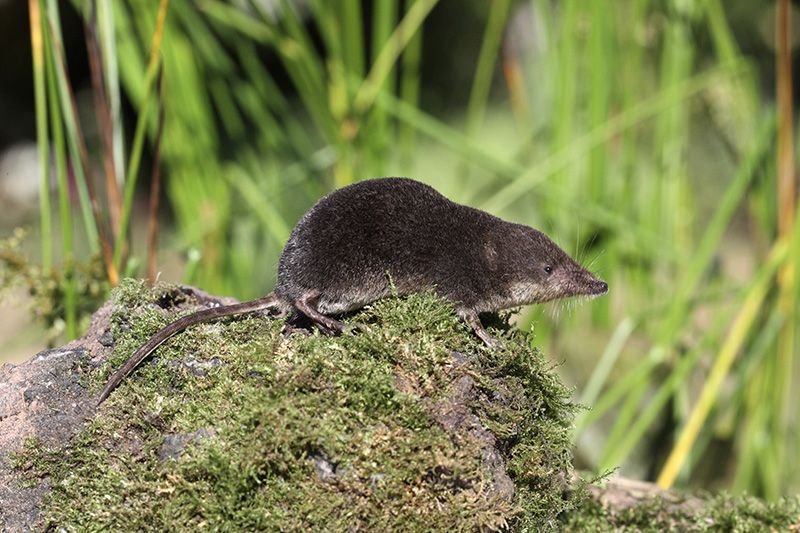Water shrew

Status
Native and locally common
Population
714,000
Scientific name
Neomys fodiens
The water shrew is well adapted to an aquatic lifestyle: they have a dark brown (almost black), waterproof coat of short fur, and ears (visible as white tufts) that can close in the water. A fringe of stiff silvery hairs runs the length of the underside of the tail, which they use as a rudder, and their hind feet have similar fringes. They can dive to depths of over 70cm, and hunt underwater as well as on land. Water shrews are mostly nocturnal and are particularly active just before dawn. They travel up to 160m along the water’s edge to find food and shelter, and dig extensive networks of small burrows and chambers, about 2cm wide, which they line with grass and leaves. They do not hibernate but are active through the winter.
Head-body length: 6 – 10 cm
Tail length: 5 – 8cm
Weight: 8 – 23g
Lifespan: 14 – 19 months; most adults die at the end of the breeding season
Reproduction
Water shrew breeding extends through April to September, with a peak in May and June. One or two litters of 3 – 15 young are born each breeding season and some females may breed in their first calendar year. The young are weaned at about four weeks but stay with their mother for a further two weeks.
Diet
Mainly freshwater crustaceans such as shrimps, caddis-fly larvae and small snails, but also small fish, frogs and earthworms.
Habitat
Mainly the banks of fast-flowing, clear, unpolluted water, but also lakes, reed-beds, fens and marshes. They are often present in gardens.
Predators
Occasionally owls, kestrels, foxes, large fish and cats.
Threats
The water shrew is subject to habitat loss through water pollution.
Status & distribution
Native and locally common. The trapping and killing of shrews requires a licence.
Population & distribution
GB population 714,000. The population trend is unknown but numbers are possibly declining. Water shrews are widely distributed in mainland Britain, particularly in central and southern England. They are scarce in the Scottish Highlands and absent from Ireland and the Isle of Man, and most of the small islands.
Did you know?
Like shrews in the genus Sorex, water shrews have teeth that are red-tipped, but unlike other species in Britain, they have venomous saliva that is capable of paralysing prey such small fish and frogs.
